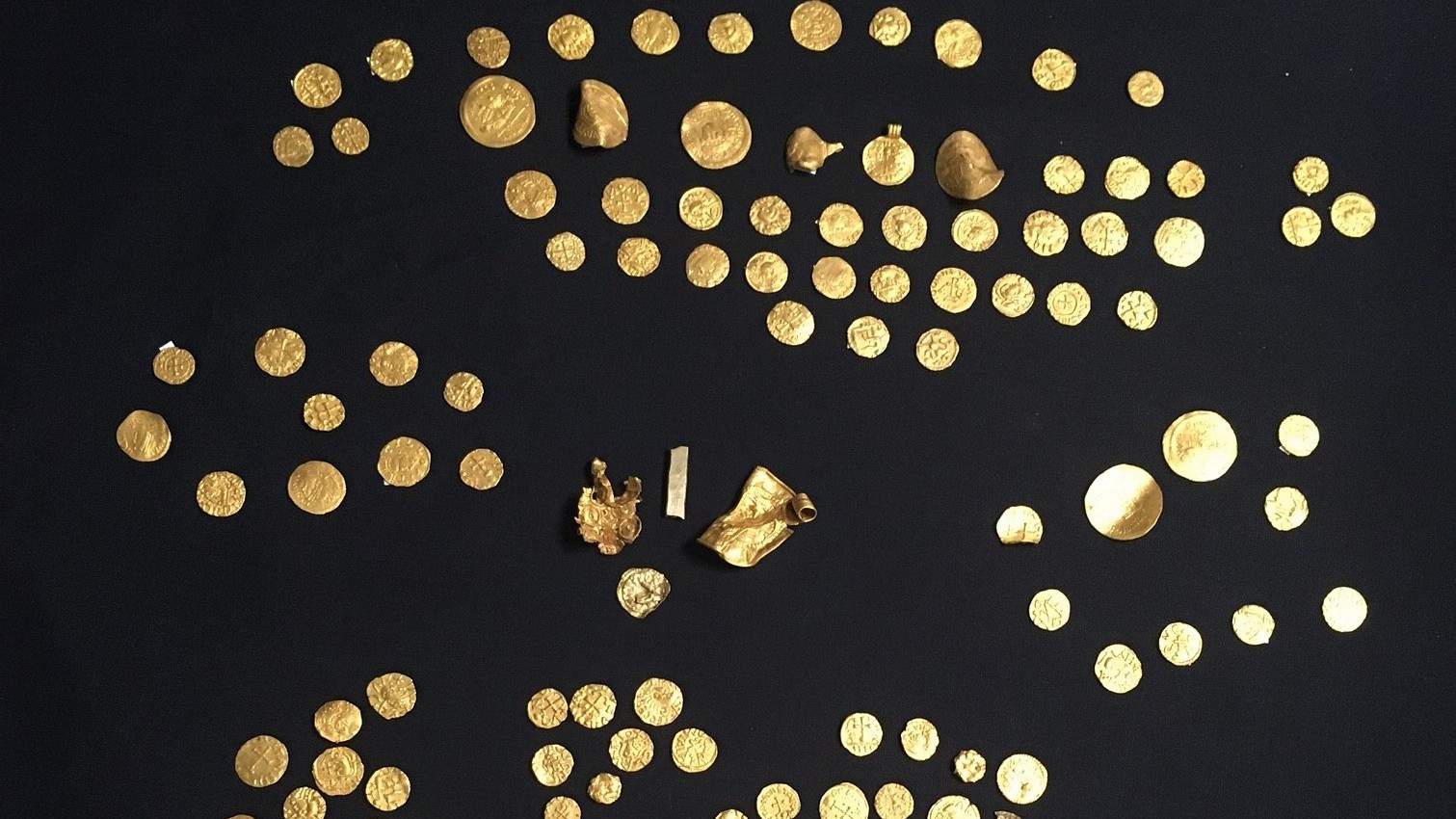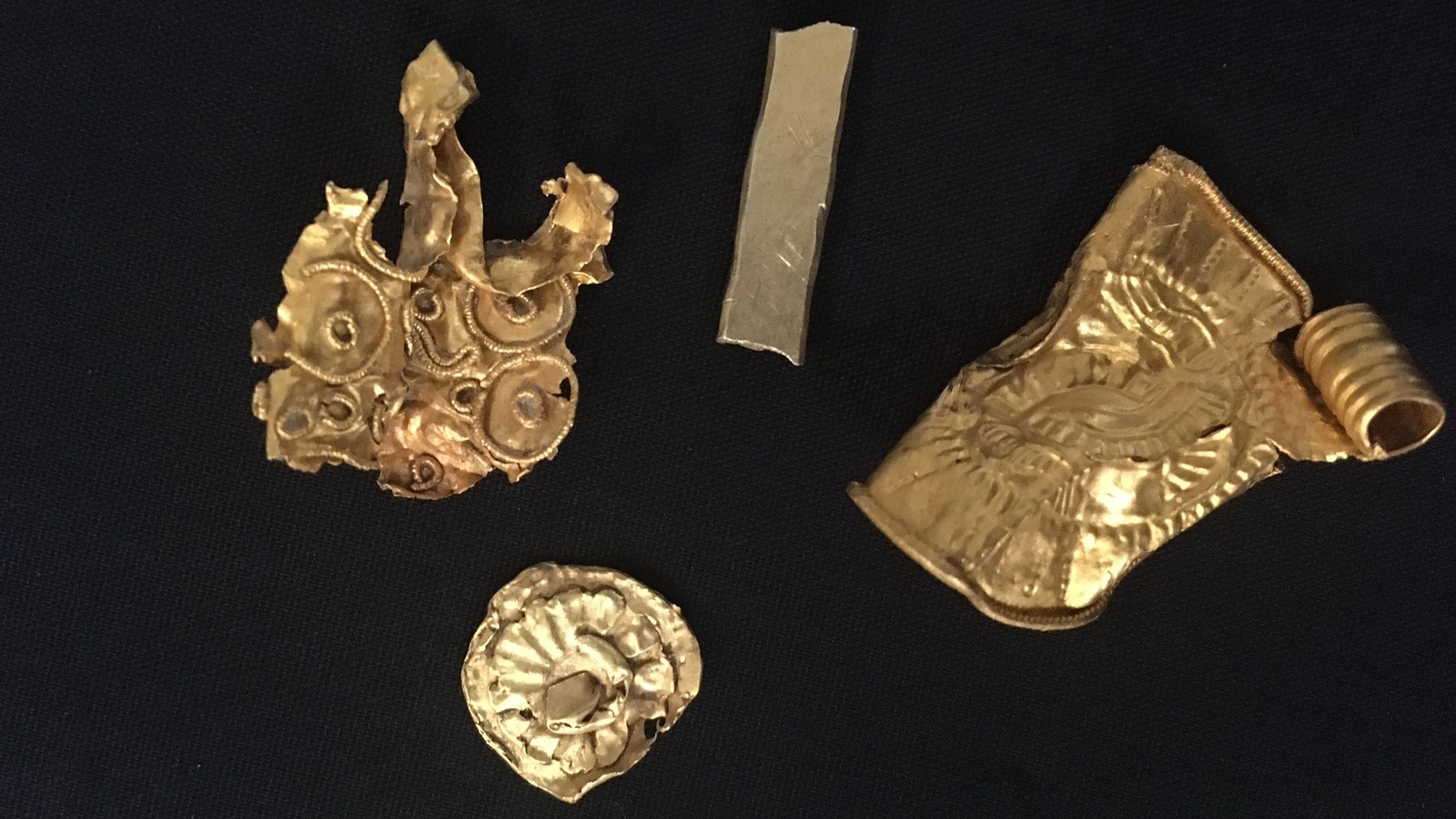Metal detectorist unearths largest Anglo-Saxon treasure hoard ever discovered in England
The treasure consists of 131 gold coins and four golden objects.

A metal detectorist in West Norfolk, England, has unearthed the largest Anglo-Saxon treasure hoard ever discovered: a bounty of 131 coins and four golden objects. Most of the items were found over the course of six years by a single detectorist, who wishes to remain anonymous, according to the British Museum.
Ten of the coins were dug up by former-police officer David Cockle, also using a metal detector, the Evening Standard reported. However, Cockle kept his discovery secret and then illegally sold the coins for 15,000 British pounds (about $20,000), according to BBC News. When the authorities discovered his theft in 2017, he was charged with converting criminal property and sentenced to 16 months in prison for "pure greed," presiding Judge Rupert Overbury said at the sentencing. Cockle was also dismissed from the police force. Of the 10 coins he sold, eight have been recovered.
Related: Photos: Roman-era silver jewelry and coins discovered in Scotland
The majority of the coins are Frankish tremisses, small coins from the sixth century that usually contain 85% to 95% gold, according to CoinWeek. Nine of the coins are solidi, larger coins from Byzantine currency that carried three times the value of a tremissis. The treasure also includes a pendant, a gold bar and two other objects that experts suspect were part of larger pieces of jewelry, according to the British Museum. It was buried sometime around 600 A.D., before the unification of England, for unclear reasons.

Previously, England's largest Anglo-Saxon coin treasure included 101 coins. That trove was discovered in a purse in 1828 at Crondall in Hampshire, ARTnews reported. However, experts suspect that this haul originally may have been larger, as the purse appeared to have been previously disturbed at the time of its recovery. Other treasure from East Anglia, the region of England where the Norfolk hoard was discovered, includes the famous Sutton Hoo burial ship, which contained a purse of 37 gold coins and was the subject of a recent Netflix movie.
The Norfolk coroner is currently investigating the West Norfolk treasure to determine whether it belongs to the British crown under the 1996 Treasure Act, which requires that all treasure be reported to the local coroner within 14 days of discovery, according to The Guardian. While still unofficial, it seems likely that the hoard will fit the bill; the Treasure Act defines "treasure" as a collection of metallic objects or coins that are at least 300 years old and a minimum of 10% gold or silver by weight, according to Portable Antiquities Scheme, a joint program of the British Museum and the Amgueddfa Cymru National Museum of Wales. If the British Monarchy claims the find, it may be placed in the Norwich Castle Museum (with support from the British Museum) for the public's benefit.
"This is a hugely important find," Gareth Williams, curator of early medieval coins at the British Museum, said in a statement. "It must be seen alongside other recent finds from East Anglia and elsewhere, and will help to transform our understanding of the economy of early Anglo-Saxon England."
Sign up for the Live Science daily newsletter now
Get the world’s most fascinating discoveries delivered straight to your inbox.
Originally published on Live Science.

Joanna Thompson is a science journalist and runner based in New York. She holds a B.S. in Zoology and a B.A. in Creative Writing from North Carolina State University, as well as a Master's in Science Journalism from NYU's Science, Health and Environmental Reporting Program. Find more of her work in Scientific American, The Daily Beast, Atlas Obscura or Audubon Magazine.










